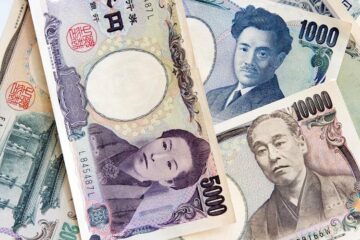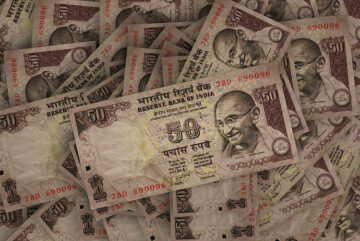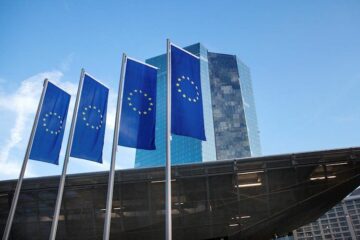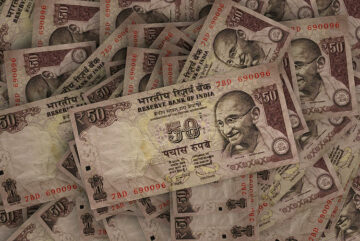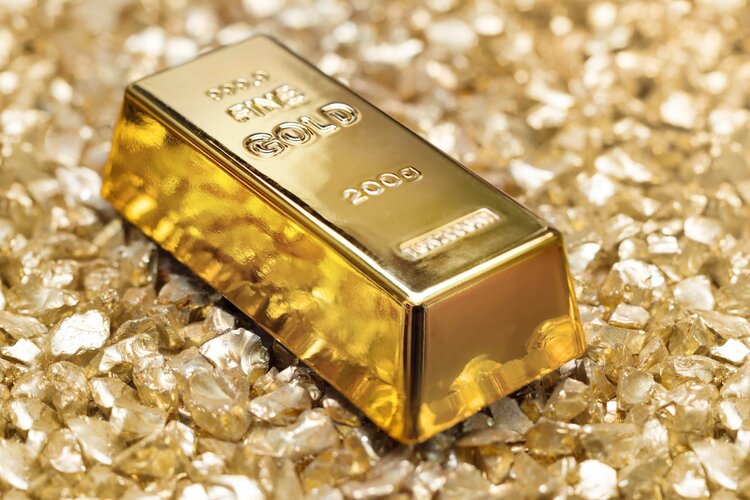
- Gold price discovers support as Fed policymakers see no interest-rate increase in September.
- The USD Index hovers near 105.00, preparing for a fresh upside amid the risk-off mood.
- Fed’s Goolsbee said the central bank is aiming to push the economy on a “golden path”.
Gold price (XAU/USD) extends recovery as Federal Reserve (Fed) policymakers suggested that the central bank will not raise interest rates further in the September monetary policy meeting. The precious metal capitalized on remarks from Fed policymakers, which seem to be backed by cooling inflation and slowing employment growth.
Meanwhile, the appeal for the US Dollar is still strong as fears of a global economic shakedown are still elevated. The US Dollar Index (DXY) is hovering near a five-month high and hopes of more gains are still strong. For the Gold price, a meaningful action will come after the release of the US Consumer Price Index (CPI) data for August, which is scheduled for next week. Scrutiny of the employment report and inflation will provide meaningful cues about the interest rate decision from the Fed for its September monetary policy meeting.
Daily Digest Market Movers: Gold price rebounds as US Dollar corrects
- Gold price finds buying interest near $1,915.00 and recovers above Thursday’s high around $1,924.00 as the upside momentum in the US Dollar starts exhausting.
- The precious metal attracted bids as Federal Reserve policymakers delivered neutral commentary on Thursday about September’s interest rate policy.
- Dallas Fed Bank President Lorie Logan said it “could be appropriate” to skip an interest rate increase at September’s meeting, but warned that more tightening may be needed to bring down inflation to 2%.
- New York Fed Bank President John Williams said there is no urgency for an interest-rate increase this month as inflation is falling and the economy is better balanced. However, Williams kept options open to keep interest rates higher for longer.
- About the labor market outlook, Fed’s Williams said that labor demand is coming down and the Unemployment Rate could rise to the 4% range.
- Fed’s Beige Book, released on Wednesday, conveyed that labor growth remained subdued. The report also said that the economy grew at a modest pace in the last few weeks and inflationary pressures abated.
- While the Fed’s survey conveyed that labor market conditions are slowing, economic data indicates that broader employment conditions remain strong.
- Unit Labor Costs in the April-June quarter jumped to 2.2% against expectations and a Q1 reading of 1.6%. Decent wage growth defies signs of cooling inflation as it could strengthen the consumer spending momentum.
- On Thursday, the US Department of Labor reported that individuals claiming jobless benefits for the first time dropped to 216K for the week ending September 1, less than the 234K expected and the former release of 229K. Jobless claims came in below expectations for the third straight week, suggesting that labor demand could strengthen again.
- Chicago Fed Bank President Austan Goolsbee said the central bank is aiming to push the economy to a “golden path,” meaning a situation where inflation recedes without triggering a recession.
- After neutral commentaries from Fed policymakers, chances that interest rates will remain unchanged at 5.25%-5.50% for the remainder of the year rose to 55% against the 53% recorded earlier.
- Meanwhile, the US Dollar Index remains below the immediate resistance of 105.00 as investors shift focus to US inflation data for August, which will be published next week.
- Before that, investors will also focus on China’s inflation data. Steady deflation risks in China would strengthen the appeal for the US Dollar.
- The US Dollar has been capitalizing on the potential risks of global economic turmoil. European and Asian economies are facing the wrath of higher interest rates.
- The US Senate confirmed World Bank economist Adriana Kugler at the Fed’s Board of Governors.
Technical Analysis: Gold price climbs to $1,930
Gold price stabilizes near the $1,920.00 support after recovering from a weekly low at $1,916.00. The precious metal attempts to shift above the 20-day Exponential Moving Average (EMA) around $1.925, while the 50-day EMA is still declining. Momentum oscillators indicate that the overall trend is sideways. The 200-EMA continues to act as a support for Gold bulls.
Fed FAQs
Monetary policy in the US is shaped by the Federal Reserve (Fed). The Fed has two mandates: to achieve price stability and foster full employment. Its primary tool to achieve these goals is by adjusting interest rates.
When prices are rising too quickly and inflation is above the Fed’s 2% target, it raises interest rates, increasing borrowing costs throughout the economy. This results in a stronger US Dollar (USD) as it makes the US a more attractive place for international investors to park their money.
When inflation falls below 2% or the Unemployment Rate is too high, the Fed may lower interest rates to encourage borrowing, which weighs on the Greenback.
The Federal Reserve (Fed) holds eight policy meetings a year, where the Federal Open Market Committee (FOMC) assesses economic conditions and makes monetary policy decisions.
The FOMC is attended by twelve Fed officials – the seven members of the Board of Governors, the president of the Federal Reserve Bank of New York, and four of the remaining eleven regional Reserve Bank presidents, who serve one-year terms on a rotating basis.
In extreme situations, the Federal Reserve may resort to a policy named Quantitative Easing (QE). QE is the process by which the Fed substantially increases the flow of credit in a stuck financial system.
It is a non-standard policy measure used during crises or when inflation is extremely low. It was the Fed’s weapon of choice during the Great Financial Crisis in 2008. It involves the Fed printing more Dollars and using them to buy high grade bonds from financial institutions. QE usually weakens the US Dollar.
Quantitative tightening (QT) is the reverse process of QE, whereby the Federal Reserve stops buying bonds from financial institutions and does not reinvest the principal from the bonds it holds maturing, to purchase new bonds. It is usually positive for the value of the US Dollar.
- SEO Powered Content & PR Distribution. Get Amplified Today.
- PlatoData.Network Vertical Generative Ai. Empower Yourself. Access Here.
- PlatoAiStream. Web3 Intelligence. Knowledge Amplified. Access Here.
- PlatoESG. Automotive / EVs, Carbon, CleanTech, Energy, Environment, Solar, Waste Management. Access Here.
- PlatoHealth. Biotech and Clinical Trials Intelligence. Access Here.
- ChartPrime. Elevate your Trading Game with ChartPrime. Access Here.
- BlockOffsets. Modernizing Environmental Offset Ownership. Access Here.
- Source: https://www.fxstreet.com/news/gold-price-rebounds-as-fed-appears-to-tip-towards-stable-interest-rate-policy-202309080942
- :has
- :is
- :not
- :where
- 1
- 2%
- 2008
- 31
- 40
- a
- abated
- About
- above
- Achieve
- Act
- Action
- After
- again
- against
- Aiming
- also
- Amid
- an
- analysis
- and
- Animate
- appeal
- appropriate
- ARE
- around
- AS
- asian
- assesses
- At
- Attempts
- attracted
- attractive
- AUGUST
- average
- backed
- balanced
- Bank
- basis
- BE
- been
- below
- benefits
- Better
- board
- Bonds
- book
- Borrowing
- bring
- broader
- Bulls
- but
- buy
- Buying
- by
- came
- capitalized
- capitalizing
- central
- Central Bank
- chances
- China
- Chinas
- choice
- claiming
- claims
- come
- coming
- Commentary
- committee
- conditions
- CONFIRMED
- consumer
- consumer price index
- content
- continues
- Costs
- could
- CPI
- credit
- crises
- crisis
- data
- decisions
- Declining
- deflation
- delivered
- Demand
- Department
- Department of Labor
- Digest
- Discovers
- does
- Dollar
- dollar index
- dollars
- down
- dropped
- during
- Dxy
- Earlier
- easing
- Economic
- Economic Conditions
- economies
- Economist
- economy
- economy grew
- eight
- elevated
- eleven
- EMA
- employment
- encourage
- ending
- ends
- European
- expanded
- expectations
- expected
- exponential
- exponential moving average
- extends
- extreme
- extremely
- facing
- Falling
- Falls
- FAQ
- fears
- Fed
- Federal
- Federal Open Market Committee
- federal reserve
- Federal Reserve Bank
- Federal Reserve Bank of New York
- few
- financial
- financial crisis
- Financial institutions
- financial system
- finds
- First
- first time
- flow
- Focus
- FOMC
- For
- Former
- Foster
- four
- fresh
- from
- full
- further
- Gains
- Global
- Global Economic
- Goals
- Gold
- gold price
- grade
- great
- Greenback
- grew
- Growth
- High
- higher
- holds
- hopes
- However
- HTTPS
- immediate
- in
- Increase
- Increases
- increasing
- index
- indicate
- indicates
- individuals
- inflation
- Inflationary
- Inflationary pressures
- institutions
- interest
- INTEREST RATE
- Interest Rates
- International
- international investors
- Investors
- involves
- IT
- ITS
- jobless claims
- John
- jpg
- Keep
- kept
- labor
- labor market
- Last
- less
- Logan
- longer
- Low
- lower
- MAKES
- mandates
- Market
- market conditions
- market outlook
- May..
- meaning
- meaningful
- measure
- meeting
- meetings
- Members
- metal
- modest
- module
- Momentum
- Monetary
- Monetary Policy
- money
- Month
- mood
- more
- Movers
- moving
- moving average
- Named
- Near
- needed
- Neutral
- New
- New York
- next
- next week
- no
- of
- officials
- on
- open
- Options
- or
- Outlook
- overall
- Pace
- Park
- path
- Place
- plato
- Plato Data Intelligence
- PlatoData
- policy
- policymakers
- positive
- potential
- Precious
- preparing
- president
- Presidents
- pressures
- price
- Prices
- primary
- Principal
- printing
- process
- provide
- published
- purchase
- Push
- Q1
- QE
- QT
- quantitative
- Quantitative Easing
- Quarter
- quickly
- raise
- raises
- range
- Rate
- Rates
- Reading
- recession
- recorded
- recovering
- Recovers
- recovery
- regional
- reinvest
- release
- released
- remain
- remained
- remaining
- remains
- report
- Reported
- Reserve
- reserve bank
- Resistance
- Resort
- Results
- reverse
- Rise
- rising
- risks
- ROSE
- Said
- scheduled
- scrutiny
- see
- seem
- Senate
- September
- serve
- seven
- shaped
- shift
- sideways
- Signs
- situation
- situations
- Slowing
- Spending
- Stability
- starts
- steady
- Still
- Stops
- straight
- Strengthen
- strong
- stronger
- substantially
- support
- Survey
- system
- Target
- terms
- than
- that
- The
- the Fed
- their
- Them
- There.
- These
- Third
- this
- throughout
- thursday
- tightening
- time
- to
- too
- tool
- Trend
- triggering
- two
- unemployment
- unemployment rate
- Upside
- urgency
- us
- US Dollar
- US Dollar Index
- us inflation
- US Senate
- USD
- used
- using
- usually
- value
- wage
- was
- Wednesday
- week
- weekly
- Weeks
- weighs
- when
- which
- while
- WHO
- will
- Williams
- without
- world
- World Bank
- would
- XAU/USD
- year
- york
- zephyrnet

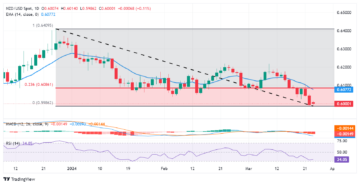
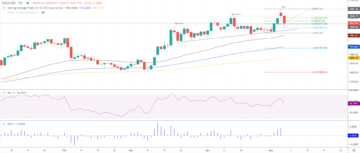
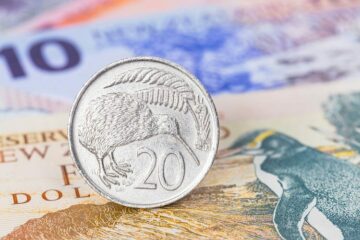
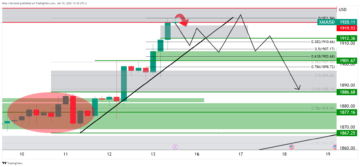
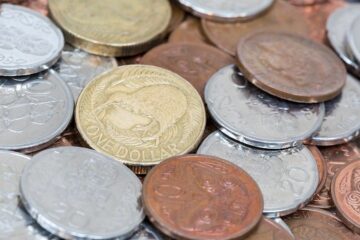
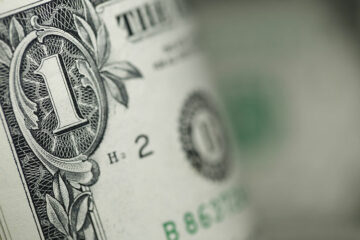
![The change of character bar’s message – Is this the turning point we’ve been waiting for? [Video]](https://platoaistream.net/wp-content/uploads/2023/10/the-change-of-character-bars-message-is-this-the-turning-point-weve-been-waiting-for-video-360x258.png)
